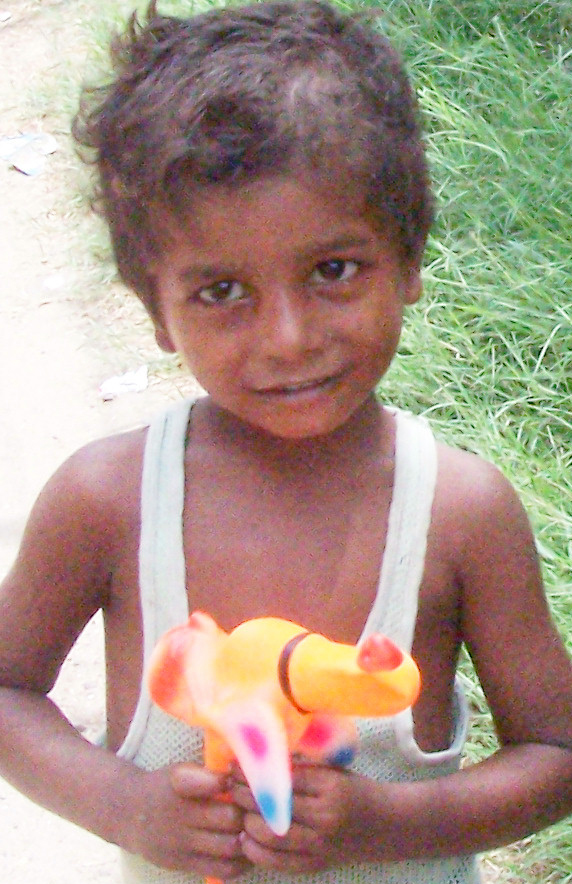 REPORT
/ INTERNATIONAL NEWS REPORT
/ INTERNATIONAL NEWS
|
|
Previous Article
Children of a lesser God
HAQ: Centre For Child Rights summarizes the miserable conditions of Indian children
Source: Still Out of Focus: Status of Children in India 2008 Summary Report, Date: , 2009
By now we all know the story of Danny Boyle’s masterpiece
film Slumdog Millionaire. And all of us can remember number of dirt- stricken
faces begging at traffic signals every time we stopped our car exasperated.
However, not all these children have the luck of Jamal
Malik, the young orphan from the slums of Mumbai and the protagonist of the
movie, who has the right answers for all the questions slammed before him in a
million dollar game show.
 HAQ's Third Status Report on India's children talk about millions of these hapless youngsters. HAQ's Third Status Report on India's children talk about millions of these hapless youngsters.
The report comes at a time when the country is trying to build the image
of an emerging economic power, even while contending with a deepening global
economic slowdown, preparing to host the Commonwealth Games 2010,grappling with
the challenges from natural and environmental disasters and fighting terrorism,
insurgency and communal violence tearing at its social fabric.
Despite constitutional guarantees
and legal provisions children continue to be discriminated against on the basis
of caste, ethnicity and gender. Discrimination is at the base of many child
rights violation. HAQ tries to uphold these evils in our society.
According to the 2001 Census, the
population of children aged between 0 and 6 years in India is 164 million. This
amounts to 16 per cent of the total population. Over six million of these
people are in slums, where basic services seldom reach. There are about 60
million children in the age group of 3-6 years. Of these around 34 million
children are covered by pre-schooling initiatives either under the ICDS or
other private initiatives.
Poor allocation of resources and
poorer utilization ensure that children in the 0-6 years group are denied ICDS
services and supplementary nutrition.
Despite a goal of ensuring every
child in school by 2007, about eight million children are still out of it,
according to an estimate by Ministry of Human Resource Development.
 A World Bank survey found 25 per
cent of government primary school teachers in India absent from school, and
only 50 per cent of teachers actually teaching. A World Bank survey found 25 per
cent of government primary school teachers in India absent from school, and
only 50 per cent of teachers actually teaching.
If lack of basic education is an
issue of great concern, there are areas of greater concern. India has the
world’s largest number of sexually abused as well as working children.
We do not still have an exact
estimate of the number of children who need special protection. Most of the
crimes against children go unreported. Every year a large number of children go
missing. Child sacrifice as a part of worship, infanticide and child marriage
are some of the other crimes that are increasing in number every day.
There are other loopholes. Unlike
in many other countries, the juvenile justice system is legally designed to
address two categories of children: those in conflict with law and those in
need of care and protection.
The latter includes children in
begging and prostitution, children who are neglected, abandoned and abused and
street children.
Despite the 2006 amendment in the
Juvenile Justice Act 2000 mandating that every district in the country must
have a Child Welfare Committee (CWC) and a Juvenile Justice Board (JJB) within
one year from the notification of the new Act, the Government itself admits
that many states and UTs have not established any. Some states do not have
enough JJBs to deal with the number of children coming in conflict with law.
Also, there is lack of implementation because of lack of role clarity within
the judiciary, administration and lack of resources. The menace of child
trafficking is yet another social evil from which children in India suffer
today.
The Way Forward
The XI Five Year Plan document
has for the first time in the history of plan documents included a separate
section on Child Rights. The plan lays particular emphasis on addressing
discrimination and exclusion. It says: “ The vision of the Eleventh Five Year
Plan is to end the multifaceted exclusions and discriminations faced by women
and children…(it) recognises that women and children are not homogenous
categories…Consequently some groups are more vulnerable than others.” Thus
apart from the general programme interventions, special targeted interventions
will be undertaken.
Previous Article
|
|


 HAQ's Third Status Report on India's children talk about millions of these hapless youngsters.
HAQ's Third Status Report on India's children talk about millions of these hapless youngsters. A World Bank survey found 25 per
cent of government primary school teachers in India absent from school, and
only 50 per cent of teachers actually teaching.
A World Bank survey found 25 per
cent of government primary school teachers in India absent from school, and
only 50 per cent of teachers actually teaching.